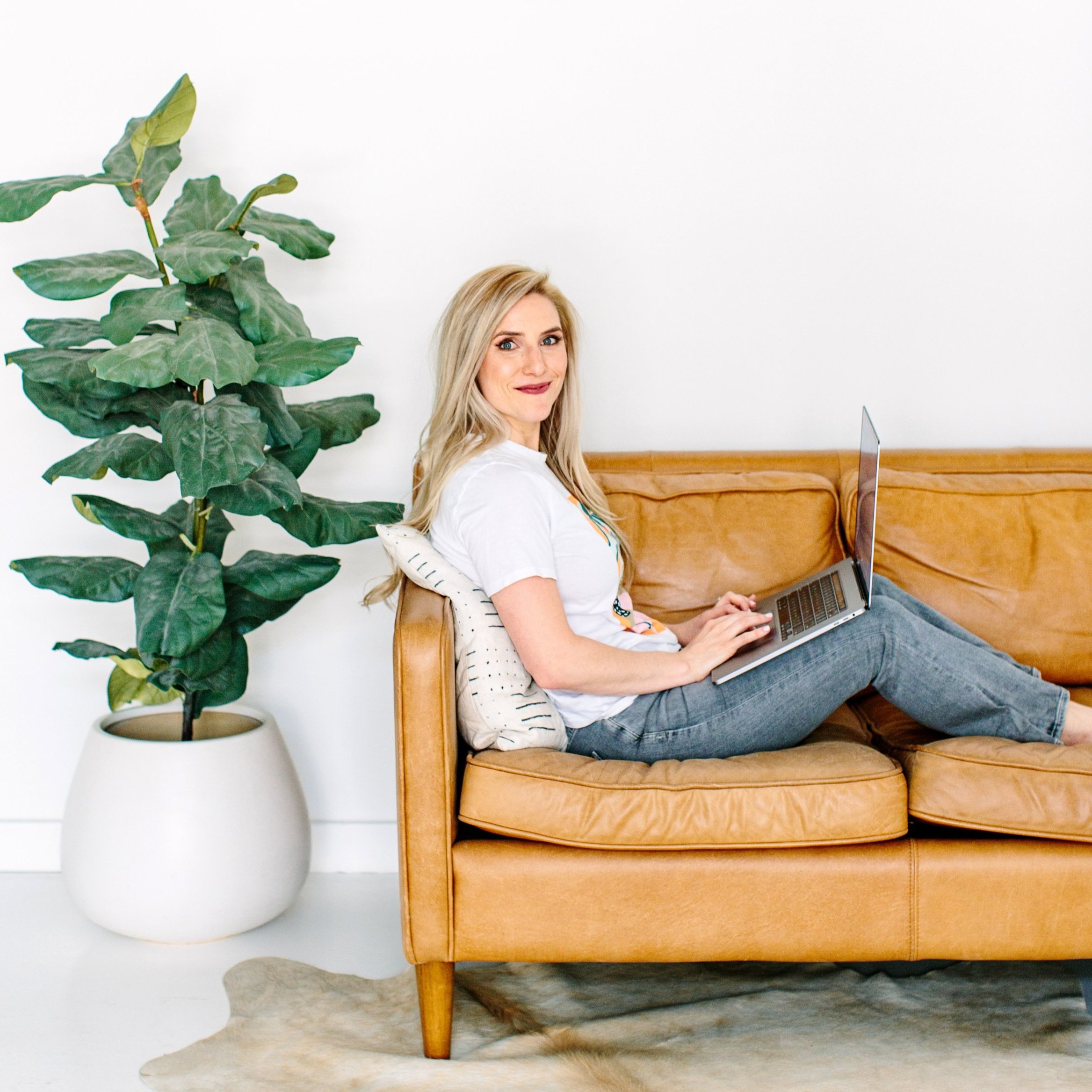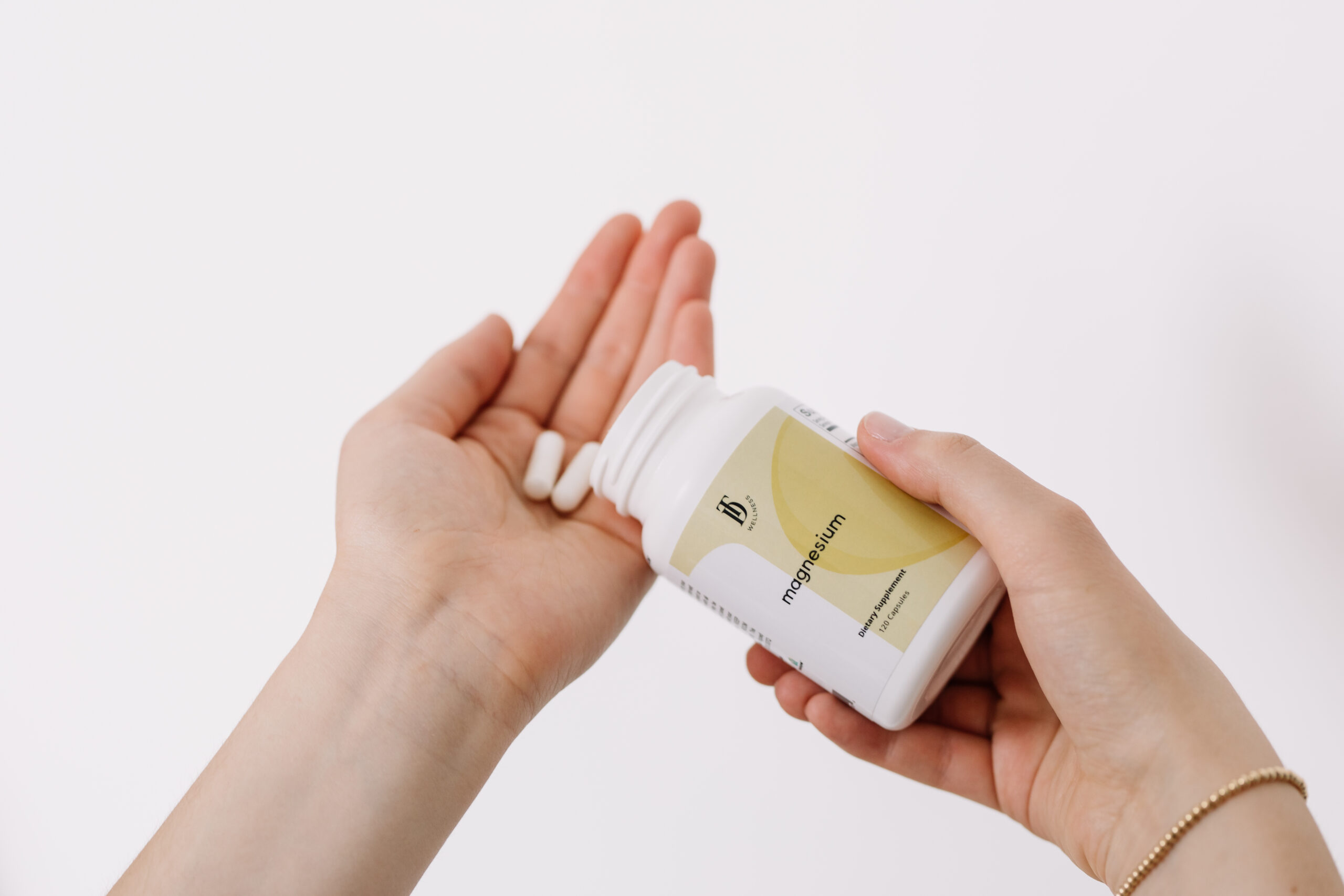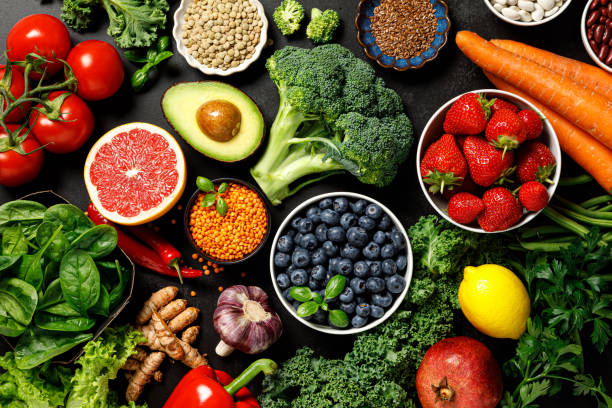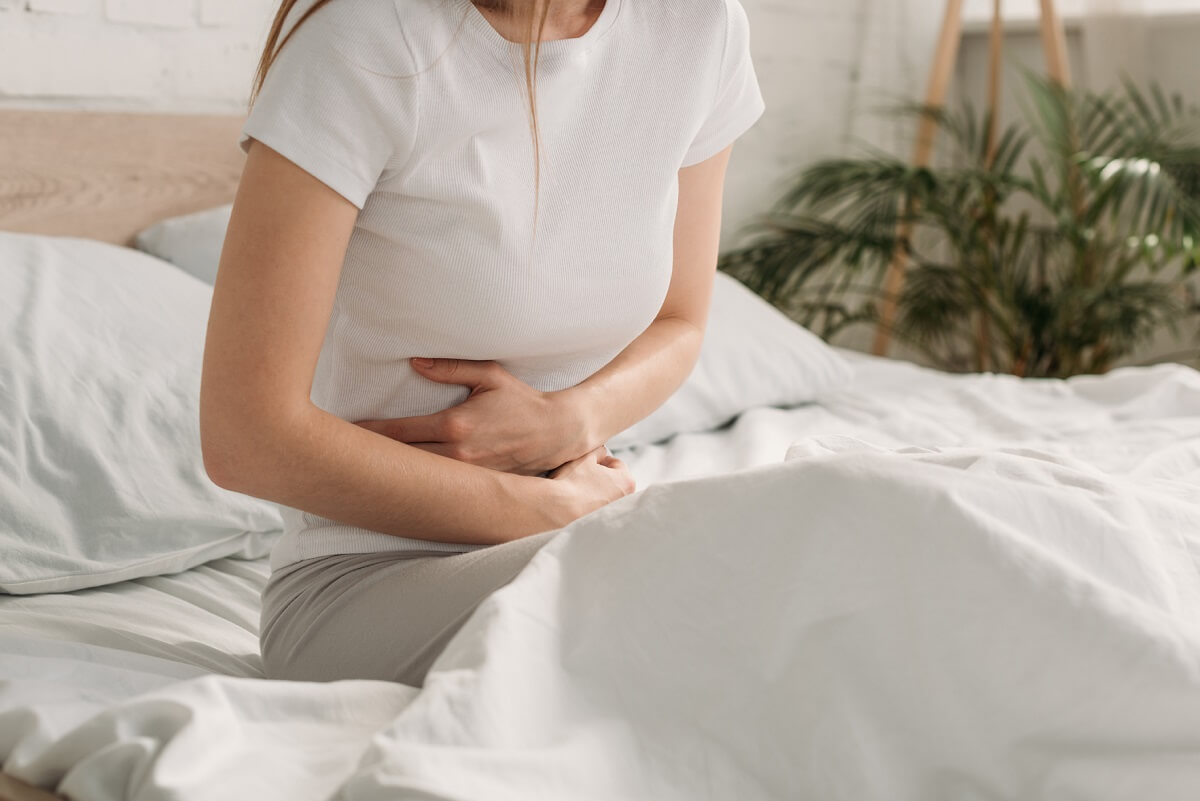How to Live Healthy on a Budget

“It’s so expensive to eat and live healthy.”
I hear it all the time. One of the biggest objections to moving to a healthier diet or a healthier lifestyle altogether is the cost.
“I’d rather pay to be healthier upfront than pay for sick bills down the road.”
That’s often the response, and there’s a lot of truth to it. But in my opinion, it isn’t good enough. I want to show you that transitioning to a healthier lifestyle is possible, even on a budget.
Let’s do it!
FREE Foundations for Health
Did you know that the vast majority of changes you can make to improve your health are what I refer to as “lifestyle” changes? They include habits and practices that promote optimal health and wellness.
And the better news? Most of them are FREE.
I consider the following to be foundational health practices. They’re big hitters in making impactful change. Just because something is free doesn’t mean it doesn’t make a difference. On the contrary, these “free meds” are the biggest game-changers when it comes to improving your health.
1. Sleep
Aim for 8+ hours a night. The benefits of sleep are too many to recount, but here are a few of my favorites: promotes hormonal balance, improves bodily detox, elevates mood and energy, promotes blood sugar balance, fights aging (both internal and external), and improves immunity. Plus a whole lot more!
Some tips to improve your sleep:
-
Avoid screens 1-2 hours before bed
-
Aim for a consistent bedtime and waketime every day
-
Get natural sunlight to the eyes, especially in the sunrise and sunset hours
-
Supplement with magnesium if possible
-
Take an epsom salt bath an hour before bed (or simply a warm bath or warm shower)
-
Keep the bedroom temperature cool
-
Avoid rigorous workouts in the evening
-
Spend 10 minutes stretching and deep breathing before bed
2. Stress management
If there is one thing that’ll wreck your health in multiple ways, it’s poor stress management. The inability to handle stress in a healthy way can lead to problems with the gut, hormones, sleep, recovery, aging, inflammation, immunity, and beyond.
Here are some mostly free ways to manage stress. The key is to be consistent and proactive, when possible:
-
Get outside
-
Prayer and meditation
-
Conversation and time with loved ones
-
Movement
-
Deep breathing
-
Bath or shower
-
Reading or journaling
3. Real + Whole Foods
I know what you’re thinking – this one isn’t free! And you’re right. Food isn’t free. Whether healthy food or junk food.
But I want to push back on the objection for a minute that healthy food is so much more expensive. If you’re buying some of the healthy packaged and highly marketed foods, then yes, you often have to pay for them. But healthy food doesn’t mean it belongs to a particular brand or the package looks a certain way.
In fact, the healthy food I’m mostly talking about doesn’t come in a package at all!
If you commit to shopping the perimeter of the grocery store, staying away from packaged foods altogether, and simply focusing on eating real, whole food, then it’s not as expensive as you might think. In fact, nut butter on an organic apple is a lot cheaper of a snack than a lot of highly-marketed conventional crackers and granola bars.
So that’s my first point when it comes to food – focus on real, whole foods.
Next, let’s talk about organic versus not organic. Here’s the deal, if you can afford it, of course, it’s better to buy completely organic. But it doesn’t have to be all or nothing.
The Environmental Working Group (EWG) puts out a wonderful resource each year noting the produce which was tested to have the most chemical and pesticide residue (the Dirty Dozen) and those with the least (the Clean Fifteen). You can find it HERE.
If you can’t afford to buy all organic, then try to prioritize purchasing organic for the Dirty Dozen and going conventional for the Clean Fifteen.
And if organic produce isn’t in your budget? Then simply focus on purchasing produce versus packaged.
That’s my second point – prioritize organic for the Dirty Dozen if possible.
Finally, I must point out that organic, healthy produce and pantry items are becoming more readily accessible and affordable at grocery stores such as Walmart, Aldi, Kroger, and Costco. You don’t have to shop at Whole Foods or Sprouts to be healthy. You can do so at your local Walmart. No excuses.
4. Hydration
Proper hydration is foundational for health. It’s okay if you can’t afford to go to the local, organic juice bar. And it’s okay if you can’t purchase the hand-crafted, organic coffee with homemade almond milk from your neighborhood barista.
Here’s what you can do. You can commit to drinking more water. Filtered, if possible. If not, simply drink more water. Aim for half your body weight in ounces per day.
And on the note of drinks, I’d challenge you to take an honest look at all of the money you’re spending on beverages outside of water. This includes coffees from anywhere outside of the home, sodas, flavored waters, energy drinks, sports drinks, beverages from cafes, vending machines, juice bars, and beyond.
This can be a place where we spend a lot of unnecessary money. How much of that money could otherwise be saved and put toward healthy food instead?
5. Detox the Home for Better Air Quality
Before you tell me how expensive air filters are, let’s talk about all of the ways we can improve the indoor quality of air in our home that do not include the purchase of expensive filters.
Here are just a few:
-
Take shoes off inside
-
Open windows daily for at least 10 minutes
-
Wet dust and vacuum (with a HEPA-filter vacuum, preferably) regularly
-
Use the exhaust fan in the bathroom before, during, and after any kind of bathing
-
Change home air filters regularly
-
Outgas new furniture, rugs, or other products outside in the sun before moving them indoors
-
Consider indoor plants
-
Get rid of all scented candles, plug-ins, potpourri, and other air fresheners
-
Use only non-toxic cleaning products and personal care products
-
Use only non-toxic laundry detergents and soaps
-
Switch to dryer balls instead of dryer sheets
-
Switch out as many plastic products (especially in the kitchen!) for glass
If you do want to filter your air but can’t afford an expensive, elite filter such as the Austin Air Filter (which I absolutely love!), then consider this hack I learned from my friends at Branch Basics:
-
DIY air filter: Buy a 20×20 box fan and a 20×20 Filtrete Air Filter. Simply turn the fan on, drop the filter on the back of the fan and the suction from the fan will hold the filter without tape or mechanical fasteners.
Equipped with the above, you can massively clean up the quality of your air without spending an arm and a leg!
6. Movement
This one is simple to say but sometimes difficult to do consistently. Here’s what I feel is the key: move in a way that you enjoy. If you do that, you’re so much more likely to be consistent with “exercise.”
Maybe for you, it looks like pilates or yoga and for someone else, it looks like HIIT or running. Maybe it’s just playing with your kids at the park or going for a brisk walk by yourself. Resistance training, stretching, you name it…quite simply, move your body. More often. And more consistently.
No fancy studio or gym membership required. Only the will and commitment to make movement a habit.
7. Other Free “Medicine” Options:
We’ve touched on a lot of free, foundational practices and pillars to improve your health. I’ll point out just a few more:
Getting Outside
Getting outside is one of the most underrated ways to boost your health. Morning and evening sunlight helps sync your circadian rhythm, which improves sleep.
Being barefoot on the ground outdoors (aka grounding) helps with healing and inflammation. Time in sunshine and nature has been proven to lower overall cortisol levels. And outdoor air quality has been found to be significantly less toxic than indoor air.
There are far more benefits to being outside, but I hope the above are enough to convince you to get yourself some time in nature!
Alternating or Contrast Showers
Have you heard of cold plunging? It’s popular in the wellness community now and for good reason. But it might leave you deflated that you can’t sink thousands of dollars into a cold plunge tub.
You can get many of the benefits with a completely free alternative.
Contrast showers mimic many of the same effects. This simple act of alternating between very hot and very cold water can: boost immunity, improve mood, boost circulation, and decrease inflammation.
Deep-Breathing, Meditation, Prayer
These stress-busting practices, when done consistently, can be absolute game-changers for both mental and physical health.
Deep breathing, in particular, helps bring the body to a parasympathetic state, which enables deeper relaxation, detoxification, and restoration.
Don’t let what you can’t afford to get in the way of making decisions to do what you can do.
Lesser Expensive Health Practices:
While these may not be one hundred percent free, the upfront cost is minimal, and the benefits are big! Here are some of my favorite lesser-expensive health routines:
Epsom salt baths
Buy yourself a big bag of these epsom salts and throw a cup into your hot bath water. Soak for twenty minutes. This will help restore your body’s magnesium levels, replenish electrolytes, promote relaxation, improve sleep, reduce stress, and calm inflammation.
Coffee enemas
Okay, not the most pleasant health practice to talk about, but I’ve got to mention it because, y’all, the benefits are so, so good!
For under fifty bucks, you can buy yourself a coffee enema kit and upregulate your body’s glutathione (aka master antioxidant!) production. A coffee enema is one of the most potent ways to detoxify your body without having to spend a ton of money.
Dry Brushing
Dry brushing not only exfoliates the skin, leaving it super smooth. It has health benefits as well! Increased circulation and lymphatic flow are the two most notable. Buy a dry brush at a reasonable price one time, and you’re good to go forever!
Rebounding
Yet another lymphatic flow-loving health practice – rebounding! This one is as simple as bouncing on a mini trampoline for ten to fifteen minutes to get lymph pumping through its pathways. You may have seen vibrating plates that cost thousands of dollars and help stimulate lymphatic flow. Well, you can do a very similar thing on an inexpensive rebounder.
Money-Saving Health Hacks:
Here are a few of my favorite money-saving health hacks:
-
DIY Air Filter as explained by my friends at Branch Basics
-
A less expensive water filter for drinking/cooking water as well as showering and bathing. Some great options include Vitabath Bath Tablets, Clearly Filtered water bottle filters or pitcher filters, or countertop options like the gravity filter from CWR. CWR and Aquasana also make great options for shower filters.
-
Shop for less expensive organic options at Costco (Kirkland Organic line), Kroger (Simple Truth Organic line), Aldi (Simply Nature Organic line), and Walmart (Great Value Organic line). Each of these stores typically boasts a good selection of organic items at much, much lower prices than those of specialty or health stores.
-
Autosubscribe to save money. Whether you auto-subscribe to healthy items from Amazon (organic pantry items, Epsom salts, etc), Thrive Market, or directly from sellers, you can often get a meaningful discount by simply choosing to “subscribe.”
-
Buy from member’s clubs and big box stores like Sam’s, Costco, Thrive Market, etc. These stores are often able to offer more affordable prices on healthy + organic products.
-
Use vinegar and water to clean if you can’t afford or don’t want to use non-toxic options. Honestly, it’s often as effective as expensive specialty brands. Add some baking soda for extra scrubbing power or some hydrogen peroxide for any disinfecting needs, and you can clean your whole home in a non-toxic way for super cheap!
-
Buy in bulk. Sometimes we forget that buying things in bulk – meats, nuts, grains, etc. – can save a ton of money. Batch cook and freeze or freeze before cooking.
-
Buy frozen. Frozen produce is often more nutrient dense than “fresh” produce because it is picked at peak ripeness and frozen immediately, whereas many times “fresh” produce is picked well before ripening in order to make it to the stores without going bad. Frozen is so much cheaper than fresh, too!
-
Know when to buy organic. As we touched on earlier, use the EWG’s website as a resource to know which produce to prioritize purchasing organic and which would probably be okay to go conventional.
-
Go without. Alright, this one seems obvious, but it’s worth reminding ourselves. Sometimes we see the price tag on things like non-toxic nail polish, non-toxic candles, organic + packaged foods, etc. and we use that as an excuse to say, “It’s too expensive to transition to a healthier or less toxic lifestyle!” But what if we simply didn’t purchase what we don’t need?
Go without the nail polish instead of paying a bunch for the non-toxic one or using one that is full of chemicals and formaldehyde. Go without the candle instead of dishing out a lot of money for a clean candle or using the conventional candle loaded with synthetic + endocrine-disrupting fragrances. Have an apple with nut butter for a snack instead of the pricey-but-clean jerky stick or the sugar-laden granola bar. Go without the fancy drinks – conventional or clean. Go without packaged foods – conventional or clean.
Similar Effects, but Less Expensive
While they may not offer identical results or do exactly the same thing, see below for some very budget-friendly health choices that have similar effects to much more expensive products and practices.
-
Sauna → Hot magnesium bath
-
Austin Air filter → Branch Basics DIY air filter hack
-
Expensive supplements → Eat real + whole foods and cut sugars, processed foods, vegetable and seed oils
-
Pilates, yoga, or gym membership → Walking outside, playing with kids, or affordable online options such as Melissa Wood Health or Obé Fitness
-
Lymphatic massage → Dry brushing
-
Power Plate → Rebounding
-
PEMF mat → Get 8+ hours sleep + outdoor barefoot grounding
-
Cold plunge tub → Cold + alternating shower
-
Hardwired home → Turn off WIFI at night
-
Osea body oil → Pure apricot oil or sweet almond oil
-
Branch Basics cleaning kit → Water + vinegar
-
Non-toxic mattress → Organic allergy encasing for conventional mattress
A Budget-Friendly Day:
What does a practical, budget-friendly day actually look like, you might be wondering. Well, here’s a loose framework:
– Wake up, get natural sunlight to your eyes, and read something uplifting/inspiring before any technology. Drink a glass of warm water with a squeeze of lemon before anything else.
– Make a clean coffee at home versus stopping by a Starbucks or your local barista.
– Whip up a quick breakfast of a few pastured eggs fried in butter and a piece of fruit on the side.
– Throughout the day, make it a point to get up and get moving as much as possible. Take the stairs when you can. Park in a spot that’s further away. Take a break from the computer and do some lunges or squats. In the same way, take mini breaks throughout the day to breathe deeply. Step outside if possible. Hydrate with water – filtered, if possible.
– Instead of going out for lunch, pack yesterday’s dinner leftovers. A clean protein, healthy fat, and complex carb.
– Snack on whole foods like sliced turkey + avocado or apple + raw mixed nuts versus packaged foods (even the healthy ones!).
– Go for a short walk outside in the evening. Stand on the grass barefoot for a few minutes. Get natural sunlight to your eyes during sunset hours.
– For dinner, make some seasoned grass fed/finished ground beef (you can buy 1lb for under $6 at Aldi or Walmart). Serve it over Siete tortillas (which you can buy in bulk at Costco) or roasted potatoes. Add a side of roasted, organic, frozen veggies drizzled in extra virgin olive oil.
– Have a piece of dark chocolate with chamomile tea for dessert instead of an expensive specialty ice cream.
– Turn off screens an hour or two before bed and read a book instead. Do some stretching. Enjoy conversation with a loved one. Take a magnesium bath. Do some deep breathing exercises. Gratitude journal.
– Turn off or unplug the wifi in your home. Go to bed twenty minutes earlier than you normally would if you were binging on tv shows or scrolling social media.
– Oh, and make sure to sleep with your phone in the other room, or on airplane mode at the very least.
Okay, okay – I know your day won’t look exactly like this because you’re either working full time or a stay-at-home mom or a night shift nurse or something else. But the general idea is this: making healthy choices for your body, brain, and emotions doesn’t have to be incredibly complicated or expensive.
You don’t need every bio-hacking device, and to be honest, if you simply focused on the free and inexpensive foundations + practices mentioned above, your health would be so much better off for it.
It truly is possible to transition to a healthier and less toxic lifestyle while living on a budget.
Final Thoughts:
Do the best you can with what you have and where you’re at.
If I can stress anything, it is this: focus on what you’re able to do and incorporate in order to live a healthier life for you and your family. Release what you can’t do or can’t afford.
I hope this helps and inspires you to be your healthiest self – right now, with whatever your bank account, calendar, job title, or season in life looks like.
Stay Updated on All Things Wellness
At Taylor Dukes Wellness, we are always working on new ways to serve you on your health journey. Be the first to learn about new healthy living resources, blog posts, and TDW offerings, by getting on my insider list here.
And get deeper support through our TDW Community. When you become a member, you get access to functional medicine expertise from Taylor Dukes and her team, a digital library of exclusive wellness content like deep dives, live monthly Q&As with Taylor and more.
Share This Post:
Your Wellness Deep Dive
- Be the first to learn about new healthy living resources, blog posts, and exclusive TDW offerings by getting on my insider list.
- Find healthy living products with ingredients you can trust – the same ones I personally use for myself and my family – in the TDW Shop. Check out our protein powders, electrolytes, supplements, and more!
- Get personalized support through the TDW Community. When you become a member, you get access to functional medicine expertise from me and my team, functional medicine lab testing and 1:1 consults, a digital library of exclusive wellness content, live monthly Q&As with me, and so much more!
YOU MAY ALSO LIKE:
Helping you get your gut right, improve energy, boost immunity, balance hormones, sleep better and look + feel your best
DISCLAIMER
PRIVACY POLICY
TERMS + CONDITIONS
ACCESSIBILITY
© 2025 Taylor Dukes Wellness
LEARN
SHOP
ABOUT
TDW Community
Free Guides
Blog
TDW Store
Fullscript
About Taylor
Press
Contact
COOKIE POLICY
SITE CREDIT
Trusted Products



